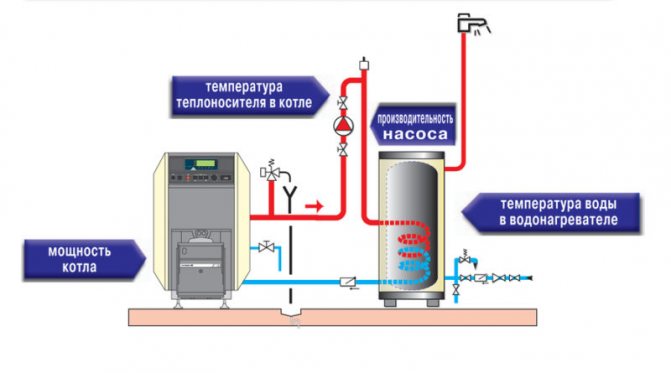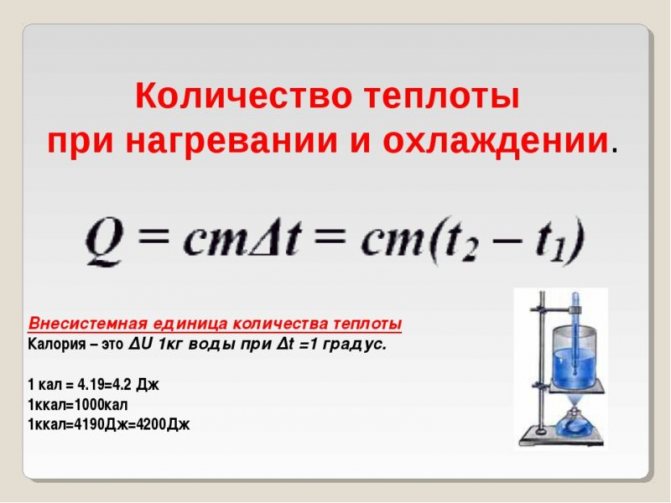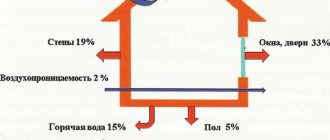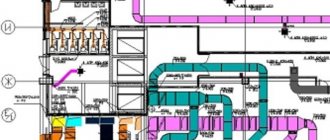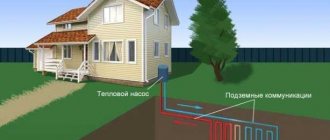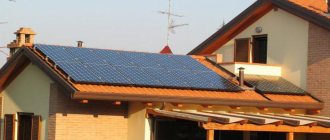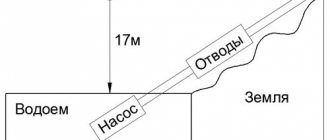What is Gcal
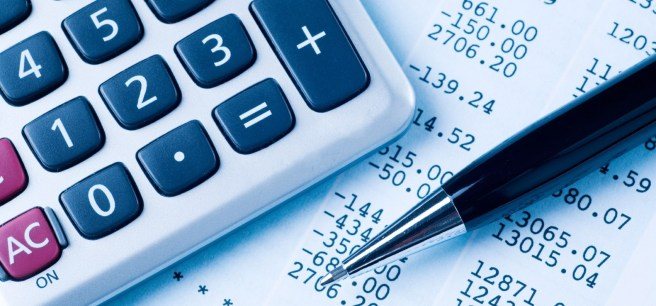
The cost of heating is important for residents of high-rise buildings with a central heating medium supply
The concept of gigacalorie means a unit of measurement of heat energy in heating. This energy within the premises is transferred by convection from batteries to objects, and is emitted into the air. A calorie is the amount of energy required to heat 1 gram of water 1 degree at atmospheric pressure.
To calculate heat energy, another unit is used - Gcal, equal to 1 billion calories. On average, heat consumption per 1 sq. m. in Gcal in the Russian Federation is 0.9342 Gcal / month. If we translate the indicator into other values, 1 Gcal will be equal to:
- 1162.2 kWh;
- heating 1 thousand tons of water to +1 degrees.
The value was approved in 1995.
Features of Gcal for residential high-rise buildings
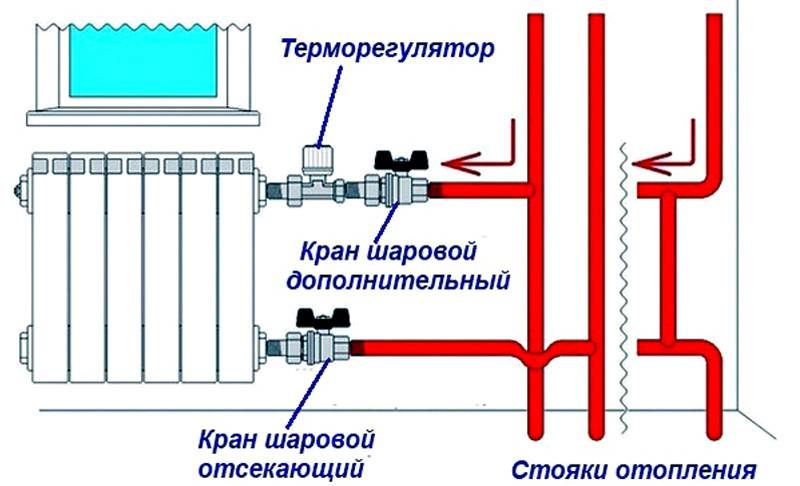

The thermostat allows you to control the flow of coolant and temperature
If the multi-apartment type of buildings is not equipped with a general or individual meter, the heat energy is calculated by the area of the premises. When there is a metering device, horizontal or sequential routing of the route, residents independently determine the amount of heat energy. To do this, use:
- Throttling radiators. When the passability is limited, the temperature decreases and energy consumption decreases.
- A common thermostat is placed on the return line. The coolant consumption depends on the temperature in the apartment. At low flow rates, the temperature is higher, at high flow rates, lower.
An apartment in a new building is mainly equipped with an individual meter.
Specificity of Gcal for a private house
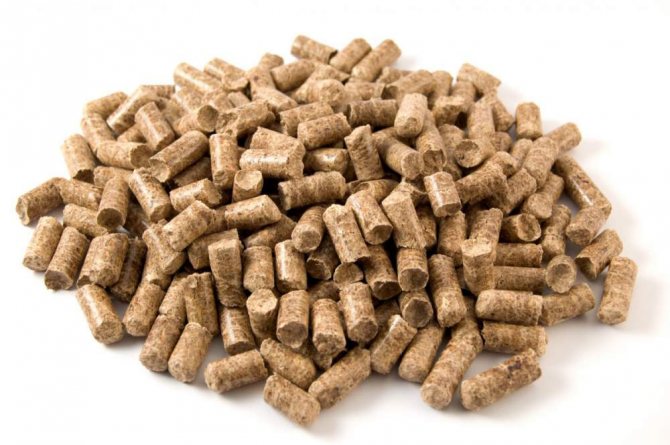

The cheapest fuel per gigacalorie is pellets
The material used for heating is determined by the tariff for private buildings. According to averaged data, the cost of 1 Gcal is equal to:
- natural gas 3.3 thousand rubles, liquefied 520 rubles;
- solid fuel - coal 550 rubles, pellets 1.8 thousand rubles;
- diesel - 3270 rubles;
- electricity - 4.3 thousand rubles.
The price of heat energy depends on the region in which the private house is located.
What is all this for?
The problem should be considered from two points of view - from the point of view of apartment buildings and private ones. Let's start with the first ones.
Apartment buildings
There is nothing complicated here: gigacalories are used in thermal calculations. And if you know how much heat energy remains in the house, then you can present a specific bill to the consumer. Let's give a small comparison: if centralized heating functions in the absence of a meter, then you have to pay according to the area of the heated room. If there is a heat meter, this in itself implies a horizontal wiring (either collector or sequential): two risers are brought into the apartment (for "return" and supply), and the intra-apartment system (more precisely, the configuration) is determined by the residents. This kind of scheme is used in new buildings, thanks to which people regulate the consumption of thermal energy, making a choice between economy and comfort.
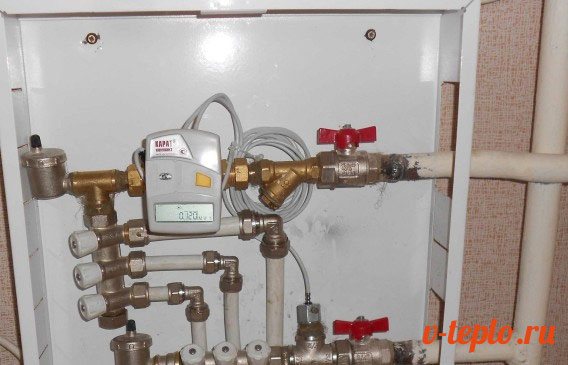

Let's find out how this adjustment is carried out.
1. Installation of a common thermostat on the "return" line. In this case, the flow rate of the working fluid is determined by the temperature inside the apartment: if it decreases, then the flow rate will accordingly increase, and if it rises, it will decrease.
2. Throttling of heating radiators. Thanks to the throttle, the passage of the heater is limited, the temperature decreases, which means that the consumption of thermal energy is reduced.
Private houses
We continue to talk about the calculation of Gcal for heating.Owners of country houses are primarily interested in the cost of a gigacalorie of thermal energy obtained from a particular type of fuel. The table below can help with this.
Table. Comparison of the cost of 1 Gcal (including transportation costs)
* - prices are approximate, since tariffs may differ depending on the region, moreover, they are also constantly growing.
General principles of computation
How heat energy is calculated is established by PP No. 354. The calculations are carried out by utilities, but they are allowed to be made by the residents themselves. You can determine the heat consumption after calculating the amount of heat energy spent on heating for the year. This period makes it possible to obtain an average standard, since the costs are lower in summer and more in winter. Payment in accordance with the standard provides for equal costs for the heating period or calendar year.
The calculation scheme depends on several factors:
- equipping the house with a heat energy meter;
- the ability to take into account the heating of all rooms with individual devices;
- calendar time for payment - winter or all year.
It is more difficult to calculate thermal energy for an apartment building than for a private one. This is due to the presence of common areas, residential and non-residential premises, ownership. Taking into account the dependence of heat energy on the dimensions of the room, it is worth guiding by PP No. 354 and PP No. 306. They note the distribution of the volume of heat used by the house in proportion to the area of the apartments. The total meter readings are divided by the share ratio of the owners' housing.
The main factors
An ideally designed and designed heating system must maintain the desired room temperature and compensate for the resulting heat loss. When calculating the indicator of the heat load on the heating system in the building, you need to take into account:
Purpose of the building: residential or industrial.
Characteristics of structural elements of the structure. These are windows, walls, doors, roof and ventilation system.
The dimensions of the dwelling. The larger it is, the more powerful the heating system should be. It is imperative to take into account the area of window openings, doors, external walls and the volume of each interior room.
The presence of special rooms (bath, sauna, etc.).
The degree of equipping with technical devices. That is, the availability of hot water supply, ventilation systems, air conditioning and the type of heating system.
For a single room. For example, storage rooms do not need to be kept at a comfortable temperature.
Number of hot water dispensing points. The more there are, the more the system is loaded.
The area of the glazed surfaces. Rooms with French windows lose a significant amount of heat.
Additional terms. In residential buildings, this can be the number of rooms, balconies and loggias and bathrooms. In industrial - the number of working days in a calendar year, shifts, the technological chain of the production process, etc.
Climatic conditions of the region. When calculating heat loss, street temperatures are taken into account. If the differences are insignificant, then a small amount of energy will be spent on compensation. While at -40 ° C outside the window will require significant expenses.
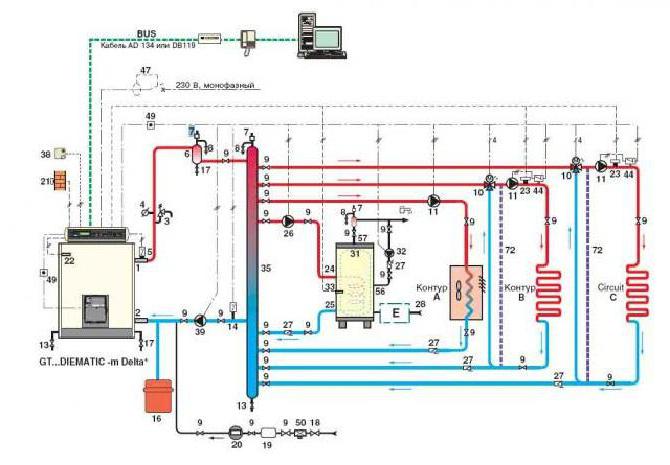

Methods for calculating the amount of heat
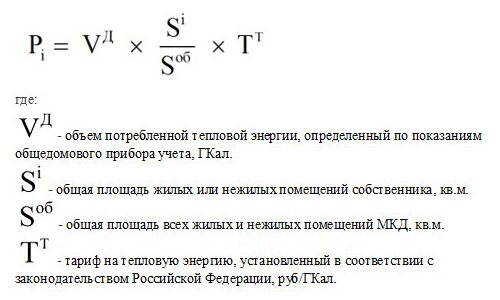

The formula for calculating gigacalories by area of the room
It is possible to determine the cost of a gigacalorie of heat depending on the availability of an accounting device. Several schemes are used on the territory of the Russian Federation.
Payment without meters during the heating season
The calculation is based on the area of the apartment (living rooms + utility rooms) and is made according to the formula:
P = SхNхT, where:
- P is the amount to be paid;
- S - the size of the area of an apartment or house in m²;
- N - heat spent for heating 1 square in 1 month in Gcal / m²;
- T is the tariff cost of 1 Gcal.
Example. The energy provider for a one-room apartment of 36 squares supplies heat at 1.7 thousand rubles / Gcal. The consumer rate is 0.025 Gcal / m². For 1 month, heating services will be: 36x0.025x1700 = 1530 rubles.
Payment without meter for the whole year
Without an accounting device, the formula for calculating P = Sx (NxK) xT also changes, where:
- N is the rate of heat energy consumption per 1 m2;
- T is the cost of 1 Gcal;
- K is the coefficient of the frequency of payment (the number of heating months is divided by the number of calendar months). If the reason for the absence of an accounting device is not documented, K increases by 1.5 times.
Example. One-room apartment has an area of 36 m2, the tariff is 1,700 rubles per Gcal and the consumer rate is 0.025 Gcal / m2. Initially, it is required to calculate the frequency factor for 7 months of heat supply. K = 7: 12 = 0.583. Further, the numbers are substituted into the formula 36x (0.025x0.583) x1700 = 892 rubles.
The cost in the presence of a general house meter in the winter
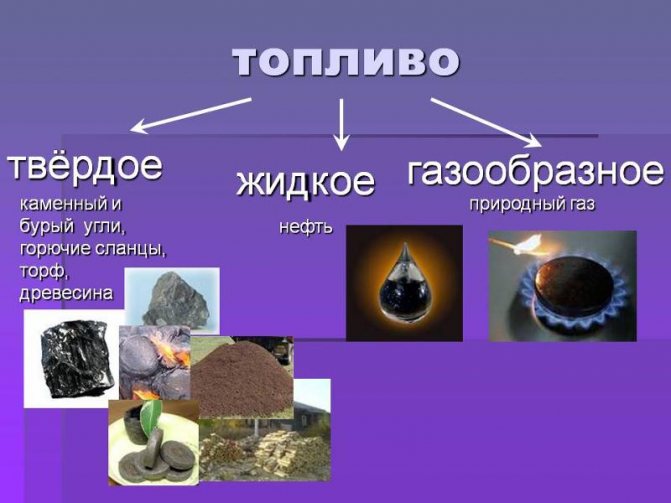

The cost of a gigacalorie depends on the type of fuel used for a high-rise building.
This method allows you to calculate the price for central heating with a common meter. Since heat energy is supplied to the entire building, the calculation is based on the area. The formula P = VxS / StotalxT is applied, where:
- P is the monthly cost of services;
- S is the area of a separate living space;
- Stot - the size of the area of all heated apartments;
- V - general readings of the collective metering device for the month;
- T is the tariff cost of 1 Gcal.
Example. The area of the owner's dwelling is 36 m2, of the entire high-rise building - 5000 m2. Monthly heat consumption is 130 Gcal, the cost of 1 Gcal in the region is 1700 rubles. Payment for one month is 130 x 36/5000 x 1700 = 1591 rubles.
Metering devices are available in all apartments
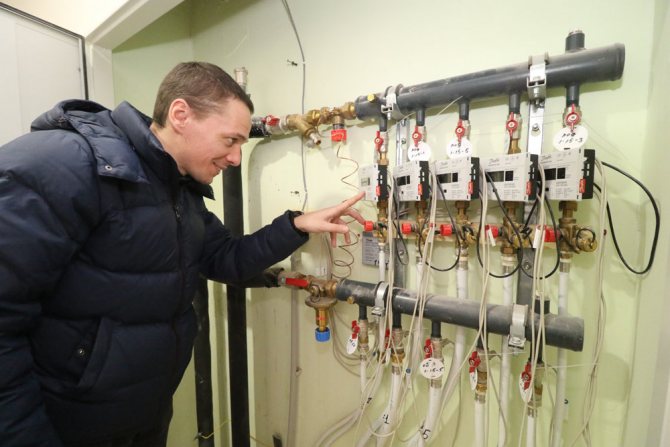

The cost of heating services for an individual meter is 30% lower
Depending on the presence of a collective meter at the entrance and a personal device in each of the apartments, there is a change in readings, but this does not apply to tariffs for heating services. The payment is divided between all owners according to the parameters of the area as follows:
- The difference in heat consumption on the general house and personal meters is considered according to the formula Vdiff. = V- Vпом.
- The resulting figure is substituted into the formula P = (Vpom. + VрxS / Stot.) XT.
The meanings of the letters are deciphered as follows:
- P is the amount to be paid;
- S - indicator of the area of a separate apartment;
- Stot. - the total area of all apartments;
- V - collective heat input;
- Vpom - individual heat consumption;
- Vр - the difference between the readings of individual and household appliances;
- T is the tariff cost of 1 Gcal.
Example. In a one-room apartment of 36 m2, an individual counter is installed, showing 0.6. 130 is knocked out on the brownie, a separate group of devices gave 118. The square of the high-rise building is 5000 m2. Monthly heat consumption - 130 Gcal, payment for 1 Gcal in the region - 1700 rubles. First, the difference in readings Vр = 130 - 118 = 12 Gcal is calculated, and then - a separate payment P = (0.6 + 12 x 36/5000) x 1700 = 1166.88 rubles.
Application of a multiplying factor
On the basis of PP No. 603, the heating fee is charged 1.5 times more if the meter has not been repaired within 2 months, if it is stolen or damaged. A multiplying factor is also set if homeowners do not transmit the readings of the device or twice did not allow specialists to check the technical condition to it. You can independently calculate the multiplying coefficient using the formula P = Sx1.5 NxT.
The formula for calculating heat energy (per 1 square meter)
The exact formula for calculating heat energy for heating is taken in the ratio of 100 W per 1 square. In the course of calculations, it takes the form:
Q = (S × 100) × a × b × c × d × e × f × g × h × i × j × k × l × m.
Correction factors are denoted by Latin letters:
- a - the number of walls in the room. For the inner room, it is 0.8, for one external structure - 1, for two - 1.2, for three - 1.4.
- b - the location of the external walls to the cardinal points. If the room faces north or east - 1.1, south or west - 1.
- c - the ratio of the room to the wind rose. The house on the upwind side is 1.2, on the leeward side - 1, parallel to the wind - 1.1.
- d - climatic conditions of the region. Indicated in the table.
| Temperature, degrees | Coefficient |
| From -35 | 1,5 |
| -30 to -34 | 1,3 |
| -25 to -29 | 1,2 |
| -20 to -24 | 1,1 |
| -15 to -19 | 1 |
| -10 to -14 | 0,9 |
| To 10 | 0,7 |
- e - insulation of the wall surface.For structures without insulation - 1.27, with two bricks and minimal insulation - 1, good insulation - 0.85.
- f is the height of the ceilings. Indicated in the table.
| Height, m | Coefficient |
| Up to 2.7 | 1 |
| 2,8-3 | 1,05 |
| 3,1-3,5 | 1,1 |
| 3,6-4 | 1,15 |
- g - features of floor insulation. For basements and plinths - 1.4, with insulation on the ground - 1.2, in the presence of a heated room below - 1.
- h - features of the upper room. If there is a cold mountain at the top - 1, an attic with insulation - 0.9, a heated room - 0.8.
- i - design features of window openings. In the presence of double glazing - 1.27, single-chamber double-glazed windows - 1, two-chamber or three-chamber glass with argon gas - 0.85.
- j - general parameters of the glazing area. It is calculated by the formula x = ∑Sok / Sп, where ∑Sok is a common indicator for all windows, Sп is the square of the room.
- k - presence and type of entrance opening. A room without a door -1, with one door to the street or loggia - 1.3, with two doors to the street or loggia - 1.7.
- l - battery connection diagram. Specified in the table
| Inset | Features of the | Coefficient |
| Diagonal | Feed at the top, return at the bottom | 1 |
| Unilateral | Feed at the top, return at the bottom | 1,03 |
| Double-sided | Return and feed at the bottom | 1,13 |
| Diagonal | Feed at the bottom, return at the top | 1,25 |
| Unilateral | Feed at the bottom, return at the top | 1,28 |
| Unilateral | Feed and return at the bottom | 1,28 |
- m - the specifics of the installation of radiators. Indicated in the table.
| Connection type | Coefficient |
| On the wall is open | 0,9 |
| Top, hidden by a shelf or window sill | 1 |
| Closed on top by a niche | 1,07 |
| Covered by a niche / window sill on top and overlay from the end | 1,12 |
| With decorative body | 1,2 |
Before using the formula, create a diagram with data for all coefficients.
Heat meters
Now let's find out what information is needed in order to calculate the heating. It is easy to guess what this information is.
1. Temperature of the working fluid at the outlet / inlet of a specific section of the line.
2. The flow rate of the working fluid that passes through the heating devices.
Consumption is determined by using heat metering devices, that is, meters. These can be of two types, let's get acquainted with them.
Vane meters
Such devices are intended not only for heating systems, but also for hot water supply. Their only difference from those meters that are used for cold water is the material from which the impeller is made - in this case, it is more resistant to high temperatures.
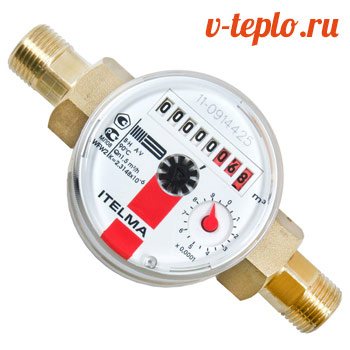

As for the mechanism of operation, it is practically the same:
- due to the circulation of the working fluid, the impeller begins to rotate;
- the rotation of the impeller is transferred to the metering mechanism;
- transmission is carried out without direct interaction, but with the help of a permanent magnet.
Despite the fact that the design of such meters is extremely simple, their response threshold is quite low, moreover, there is also reliable protection against distortion of readings: the slightest attempts to brake the impeller by means of an external magnetic field are suppressed due to the anti-magnetic shield.
Devices with a differential recorder
Such devices operate on the basis of Bernoulli's law, which states that the speed of a gas or liquid flow is inversely proportional to its static movement. But how does this hydrodynamic property apply to the calculation of the flow rate of the working fluid? It's very simple - you just need to block her path with a retaining washer. In this case, the rate of pressure drop on this washer will be inversely proportional to the speed of the moving stream. And if the pressure is recorded by two sensors at once, then you can easily determine the flow rate, and in real time.
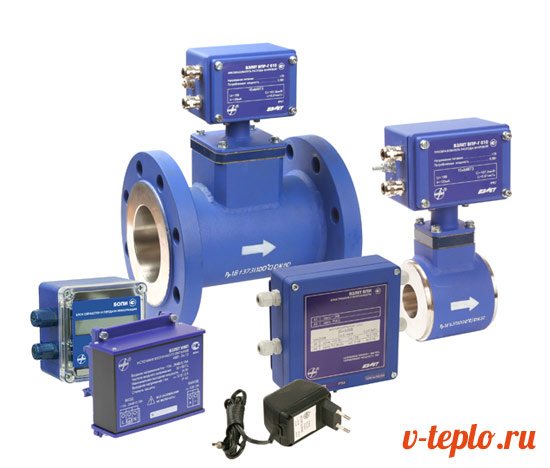

Note! The design of the meter implies the presence of electronics.The overwhelming majority of such modern models provide not only dry information (temperature of the working fluid, its flow rate), but also determines the actual use of thermal energy. The control module here is equipped with a port for connecting to a PC and can be manually configured.
Many readers will probably have a logical question: what if we are talking not about a closed heating system, but about an open one, in which selection for hot water supply is possible? How, in this case, to calculate Gcal for heating? The answer is quite obvious: here the pressure sensors (as well as the retaining washers) are placed simultaneously on the supply and on the "return". And the difference in the flow rate of the working fluid will indicate the amount of heated water that was used for domestic needs.
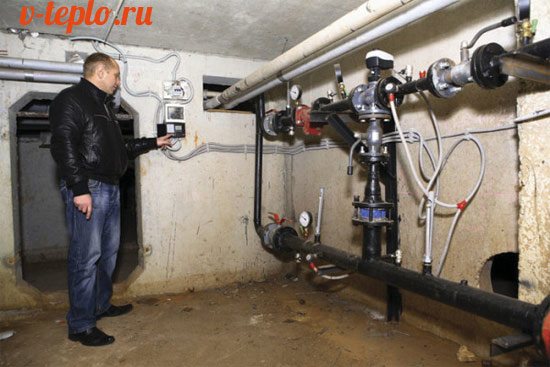

Accounting devices for houses and apartments
A special device allows you to accurately calculate tariffs for water supply, electricity, gas and heat. Users are allowed to install a heat meter to record the consumption of heat energy. The device measures in Gcal / h, kW / h and kJ / h. Today they are popular.
Vane meters


The vane meter works effectively at temperatures below 22 degrees
The counter has the form of a mechanism with a perpendicular rotation axis. The model is characterized by low sensitivity, which makes it possible to accurately measure heat costs. The regulators are suitable for rooms with good thermal insulation, temperature indicators of +26 degrees. The vane apparatus with the temperature correction functions up to +22 degrees counts the minimum Gcal.
Benefits:
- inexpensive cost;
- power supply from batteries;
- ease of use;
- measurement accuracy.
Minuses:
- risk of damage due to water hammer;
- rapid wear of the mechanism;
- pressure increase in the system;
- when the impeller is jammed, the water flow is not allowed through.
Vane-type devices are suitable for taking readings when a small volume of water is used.
Devices with jump recorders
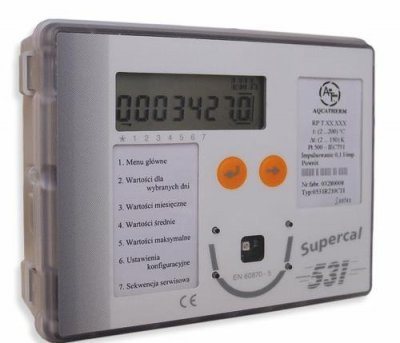

Electronic devices are more expensive, but they count gigacalories more precisely.
The impulse device performs remote readings from 2-16 channels, therefore it is suitable for a private or apartment building. Accounting and data transmission is carried out to an LCD monitor, through a detachable interface, to a laptop or computer using a network cable, via a GSM network.
The scenario according to which the readings need to be measured is set by the user. Ultrasonic devices can be connected to the water and gas supply systems, are part of the ASKUE or are combined with the "smart home" system.
Benefits:
- many options for general and private measurements;
- the ability to integrate into several accounting systems;
- strength due to the absence of movable units;
- beautiful appearance and compactness;
- protection from dust and moisture - the meter can be placed in the kitchen or outdoors;
- durable body;
- functions of self-diagnosis of malfunctions;
- extensive communication;
- execution with or without a removable computing unit;
- the period between inspections is 6 years, between replacements - 10 years.
Minuses:
- high price;
- communication capabilities depend on the specifics of the output;
- the cost of purchasing flow meters, pressure sensors, remote control modules for basic equipment.
For outdoor use, models with differential recorders are suitable, which have a moisture protection level of IP 68.
Translation table
A quick translation of round numbers can be done using tables:
| Gcal to kW | ||||||||
| giga calories / hour | 1 | 2 | 3 | 4 | 5 | 10 | 15 | 20 |
| kw | 1163 | 2326 | 3489 | 4652 | 5815 | 11630 | 17445 | 23260 |
| kW to Gcal | |||||||
| kw | 1000 | 5000 | 10000 | 30000 | 50000 | 100000 | 500000 |
| gcal / h | 0.85984 | 4.29922 | 8.5984 | 25.795 | 42.992 | 85.984 | 429.9226 |
Results of all calculations
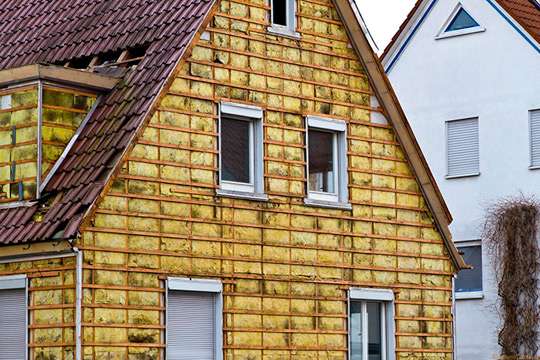

In an insulated house, the amount of consumed gigacalories will be less
With the correct use of the calculation formula, you can find out the amount of consumed Gcal of thermal energy. The information will help you plan your budget, clarify the total amount to be paid. Based on the above formulas, we can conclude about the cost of gigacalories for a structure up to 200 squares.This value is equal to 3 Gcal per month. Taking into account the duration of the heating season in most regions of the Russian Federation in 6 months, it is easy to determine the approximate heat consumption. You will need to multiply 3 Gcal by 6 months. The result is 18 Gcal.
The cost of gigacalories is easier to calculate for a private house according to the indicators of an individual meter. The settlement process for apartments is complicated by the presence of a house and personal meter. However, such a procedure is implemented independently without visits to special organizations.
To calculate heat energy, special mathematical formulas are used. The most accurate data are substituted in them, and energy providers are informed about self-calculation. When calculating, you can use online calculators or contact specialists who will perform all operations, focusing on the indicators of your room and the type of counter.
Alternative options
As there are various ways to provide housing with heat by choosing a heat carrier - water or steam, there are also alternative methods for calculating the heat received. Here are two more formulas:
Thus, calculations can be done with your own hands, but it is important to coordinate your actions with the calculations of the heat supplying organizations. Their calculation instructions may be completely different from yours.


The calculations will be much more difficult if you are going to install heated floors in the house, but here you will need to turn on the electricity. And this is a completely different "opera", with new performers, but from the same state bodies
Helpful advice. Often reference books provide information not in the national system of units of measurement, to which the calories belong, but in the international system "C". Therefore, we advise you to remember the conversion factor of kilocalories to kilowatts. It is equal to 850. In other words, 1 kilowatt is equal to 850 kilocalories. From here it is no longer difficult to translate gigacalories, if we consider that 1 gigacalorie is a million calories.
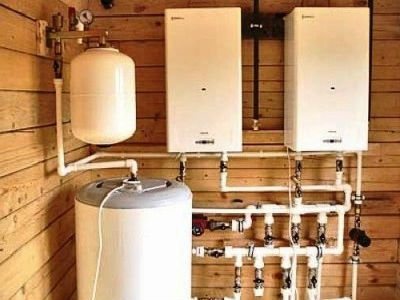

The calculation is all the more necessary when it comes to heating a country house.
All counters, and not only the simplest brownies, unfortunately suffer from some measurement error. This is a normal situation, if, of course, the error does not exceed all conceivable limits. To calculate the error (relative, in percent), a special formula is also used:
- V1 and V2 are the previously considered indicators of the coolant flow rate, and
- 100 - conversion factor to percent.
The permissible percentage of error in calculating heat is considered to be no more than 2 percent, given that the error of measuring instruments is no more than 1 percent. You can, of course, do with the old proven method, here you don't really need to do any calculations.
Such an exit is sometimes the saving and most convenient.

